*** IMPORTANT - I'm retiring my digital files - SVG/PNG/DXF/EPS - and printables from 31st December 2025 ***
*** Please ensure that you have everything you need - files and/or instructions printed off from the website (find them currently in the ARCHIVES section) - by 31st December 2025 as they will not be available after this date ***

September
Birds in My Nature Journal
The Turning of the Year
- Home
- Nature Journaling
- September Birds
The turning of the year - September birds from my Yorkshire nature journal - owls, greenfinches and migrating geese...
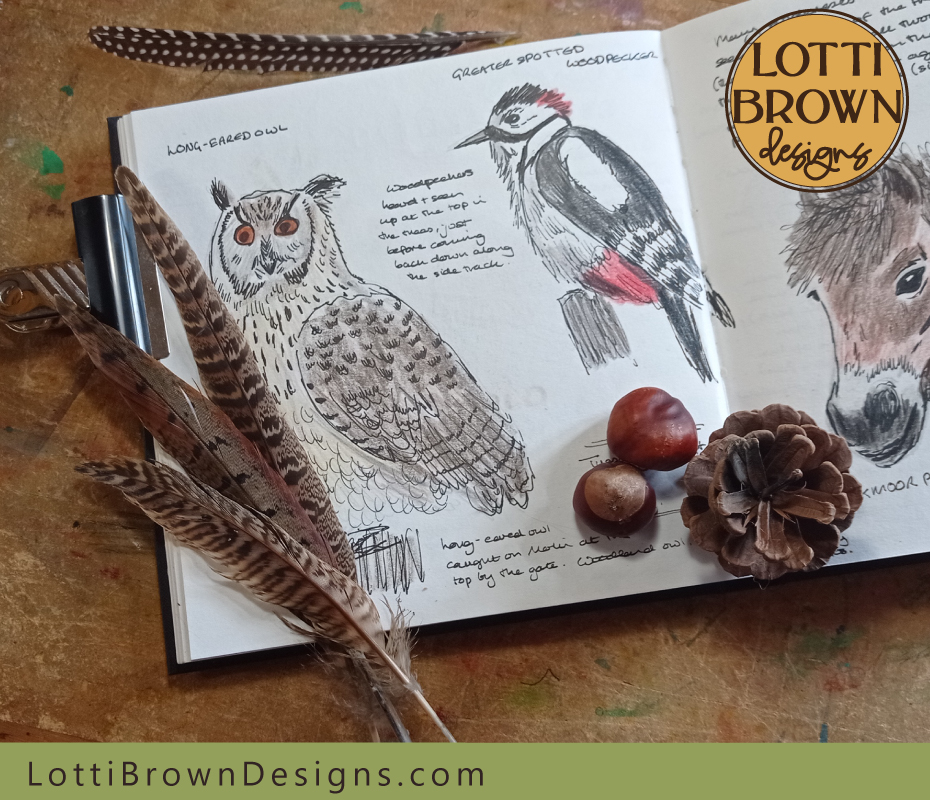 Nature journaling birds in September
Nature journaling birds in SeptemberSeptember begins with the hazy sunshine of late summer and ends with the misty morns of autumn. Around the September equinox, daylight changes quickly - darker mornings and the evenings seeming to swoop in and swallow the berry-filled hedgerows.
It feels like we’re on a cusp, experiencing the turning of the year, the threshold between the seasons, before the colder winter days set in. My nature journal shows the shifts too, colourful leaves underfoot, dew-filled cobwebs on our morning walks, and the different birds that now appear…
An Owl Experience

All month, at sunset, we’ve been hearing the funny ‘snoring’ noises of baby barn owls from the owl nesting box in the fields near my home. They aren’t actually snoring – they’re begging for food.
Some evenings, we’ve watched the parent hunting and once saw it coming back clutching a mouse for its chicks. And once, I caught an awe-inspiring glimpse of one of the chicks itself. Our eyes met briefly before it hastily retreated back to the safety of its box.
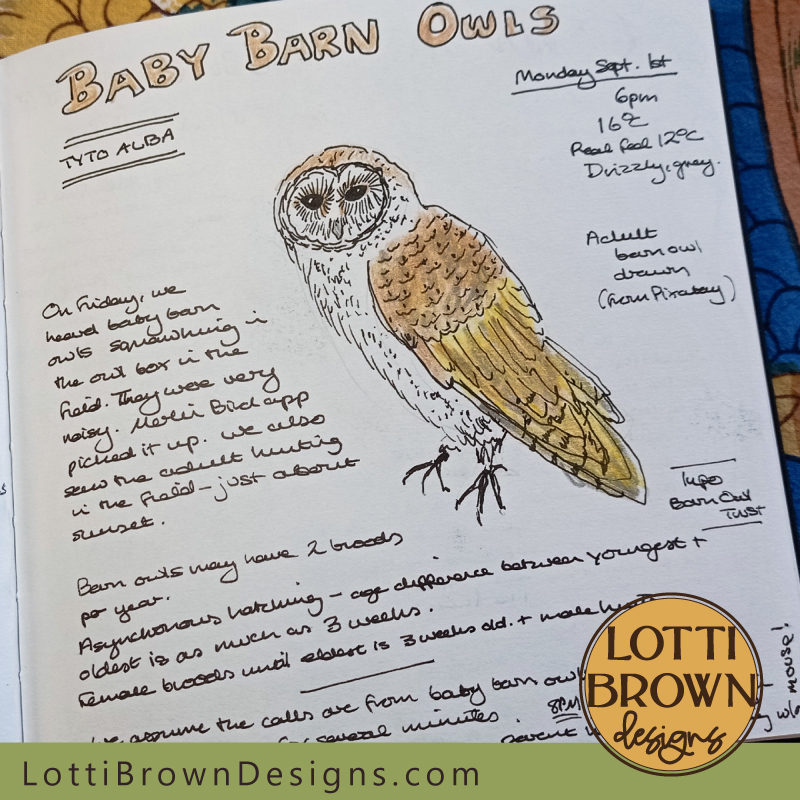 Hearing baby barn owls
Hearing baby barn owlsOwls are often seen as messengers from the otherworld, the guardians of the threshold between night and day, light and dark. So their presence feels fitting around the equinox. They feel like protectors to help guide us into these darker months of autumn and winter.
From the Fields
September is also harvest time, a time of plenty and abundance with the final crops being gathered in, and the trees and hedgerows heavy with apples and berries. It’s great for autumn birdwatching too…
The fields are now filled with tall weeds that supply our small finches with seeds – we’ve seen flocks of linnet, buntings, and greenfinches flitting between fields and perching on the tall stems to feed and prepare their bodies for winter.
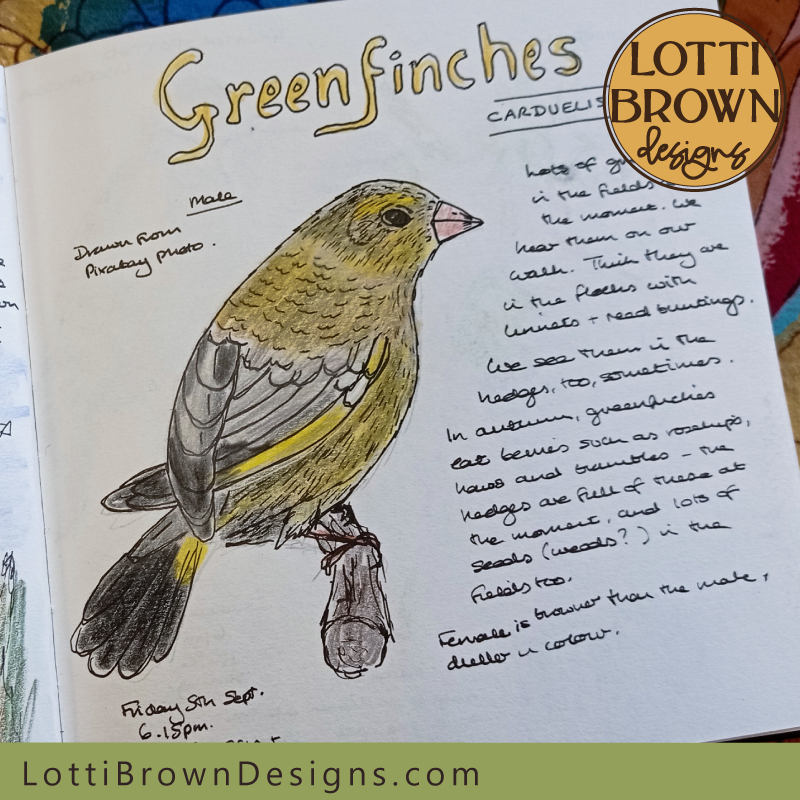 Greenfinch
GreenfinchIn the Christian tradition, greenfinches are symbols of hope and joy, so it’s lovely to see their bright flashes of yellow and green as the summer colours fade.
I love to hear their chatter as they gather with the linnets and buntings to seek safety in numbers and all enjoy this fantastic seed party together.
Into the Woods
In our local woodland, too, the birds are busy as the year turns – a long-eared owl, and the Greater-spotted woodpecker glimpsed through the trees, calling out its greetings – to us, perhaps, or (more likely) to the other birds?
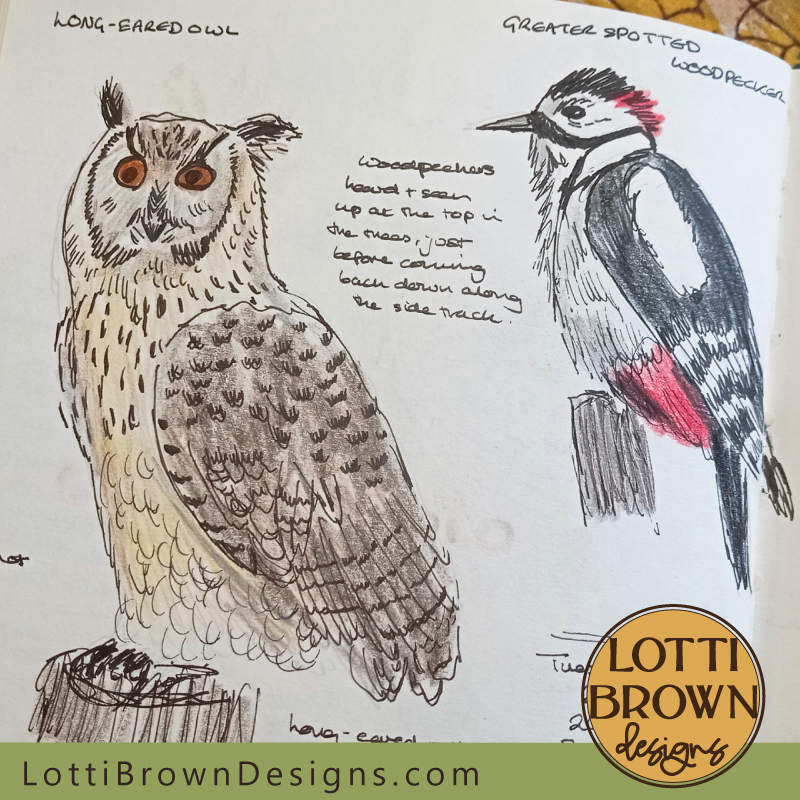 Greater-spotted woodpecker and long-eared owl
Greater-spotted woodpecker and long-eared owlTiny flocks of goldcrests flicker through the treetops as they feed on the glut of pine cones. Goldcrests, along with the similar firecrests, really are tiny – they’re actually the UK’s smallest bird. In European folklore, they’re often considered ‘king of the birds’ with their beautiful golden crowns, showing how the smallest can still be mighty!
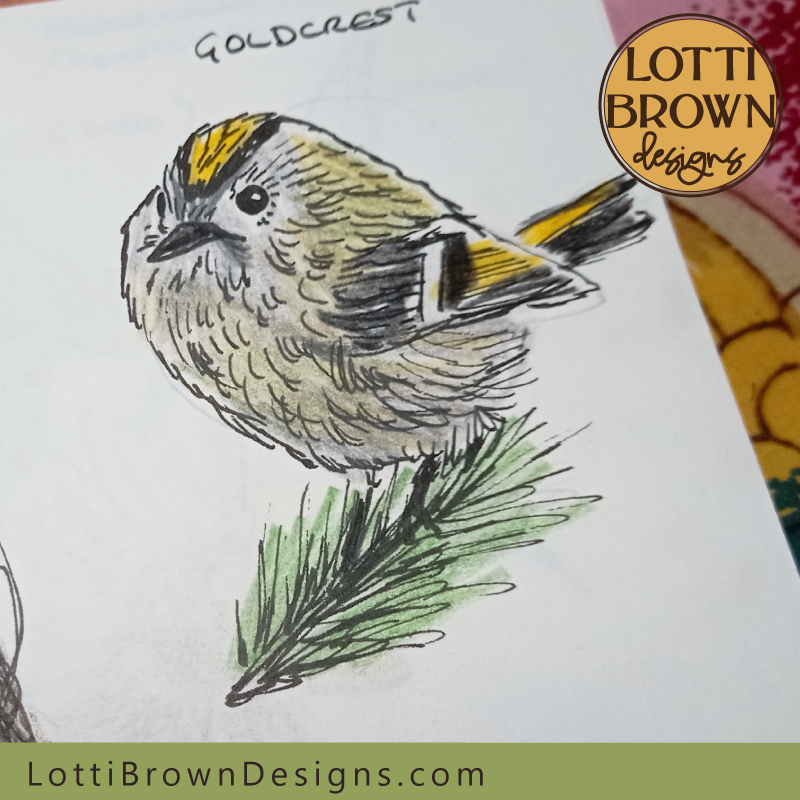 Goldcrest
GoldcrestArrivals and Departures
September is also a month of movement, too. Some of our summer favourites now leave us, such as the swallows, and house martins. But our winter visitors are starting to arrive…
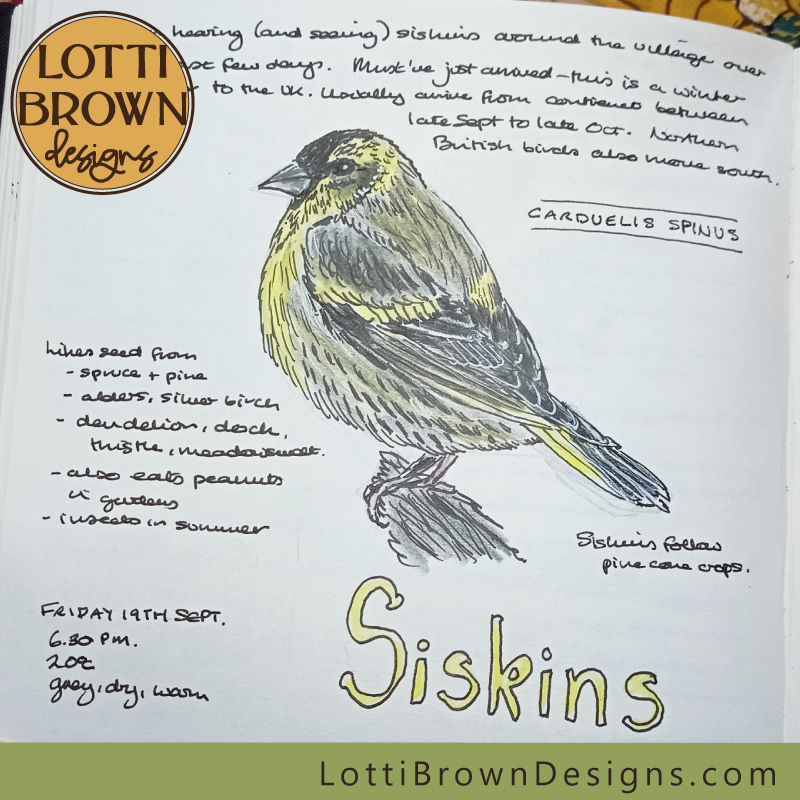 Siskin
SiskinAs we move into the second half of September, we're hearing lots of siskins around the village - lovely! These are likely winter migrants to Britain, as we didn't hear them earlier in the year. They usually arrive in Britain from Europe from late September to late October. They might also be British birds on the move, as siskins summering in the north of Britain will also move to the south in Autumn.
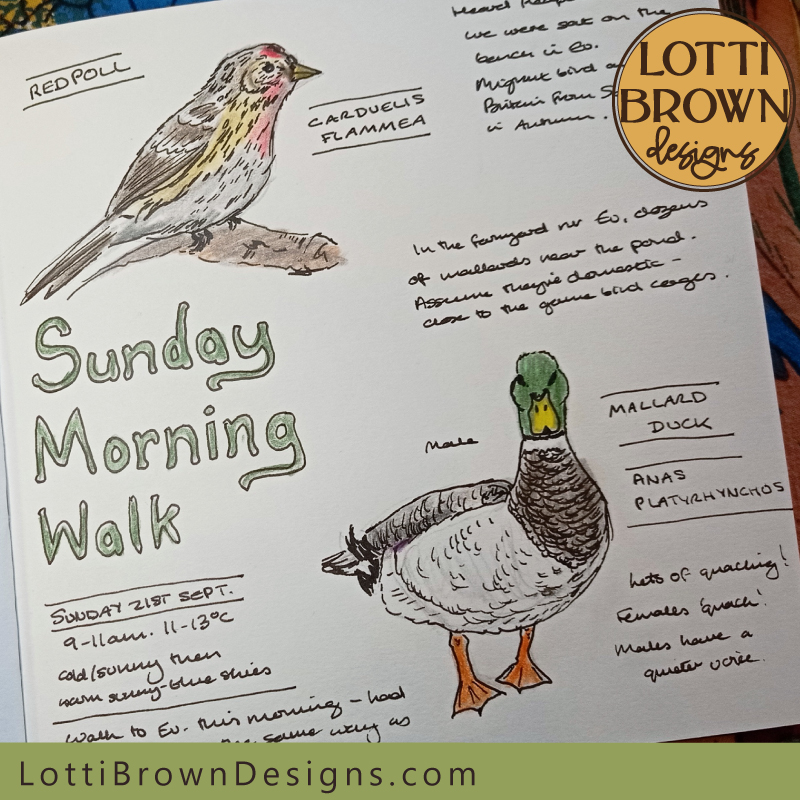 Mallard and Redpoll
Mallard and RedpollWhile the gorgeous mouse-like treecreeper crawls around the tree trunks as we walk through the fields and copses and we listen to the sociable quacking of dozens of mallards, we’ve also spotted the sweet rosy redpolls which arrive in Britain from Scandinavia in the autumn, and heard the distinctive honking overhead which signals the arrival of the migrating geese.
This is the first year that we’ve had Merlin Bird app to help us identify the calls of the geese – so far, we’ve heard Greylag geese and Pink-footed geese, this latter migrating to Britain from Iceland.
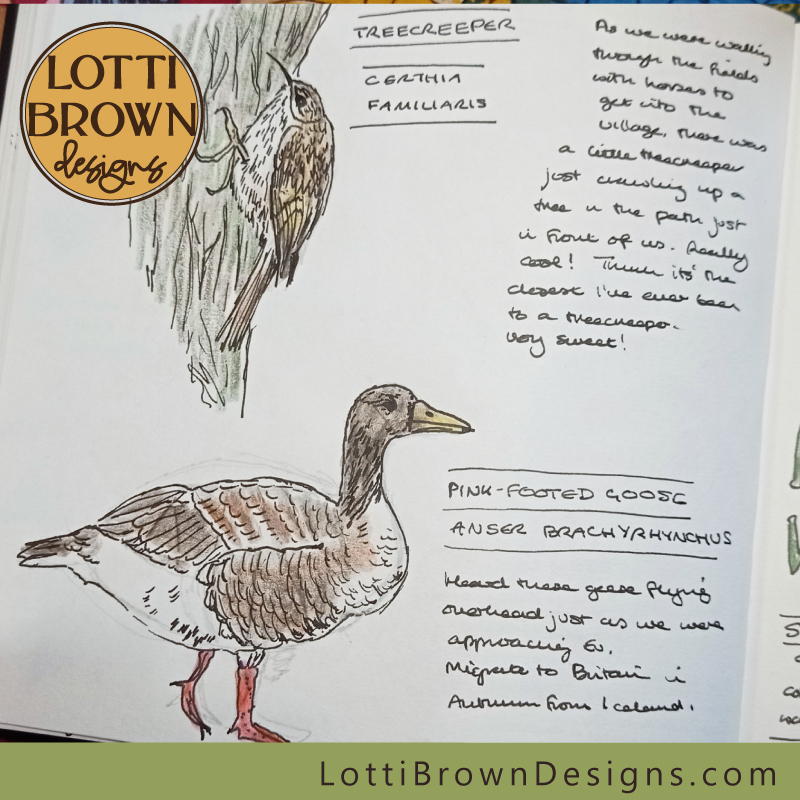 Treecreeper and Pink-footed geese
Treecreeper and Pink-footed geeseWe usually hear lots of geese through autumn, and again in Spring, and they seem to pass right over our house, so I’m looking forward to following their migrations and being able to actually identify which geese are passing over us this year.
I’m expecting to hear and see many more geese in the coming weeks as the migratory birds start to arrive in greater numbers. It’s amazing how instinctively birds know their true path.
My September nature journal reminds me that this is a time of transition and change, a balance between holding on and letting go as the seasons turn.
Just like the birds, it’s a time for us to nourish ourselves in preparation for the winter months – a time to seek comfort and joy in community - and a time to trust our instincts as we tread our own true paths.
Where to Go Next
Learn more about what is nature journaling here...
Get your free guide to getting started with nature journaling here...
Learn how to enjoy being more mindful in nature here...
Explore all topics and articles about nature journaling here, including monthly peeks inside my real nature journals!
I also have a short PDF course called 'Imperfect Nature Journaling' which has 20 exercises to help you explore nature journaling in different ways to help you find the right way for you, personally, to enjoy nature journaling as a rewarding hobby for fun and relaxation...
Online Nature Journaling Course
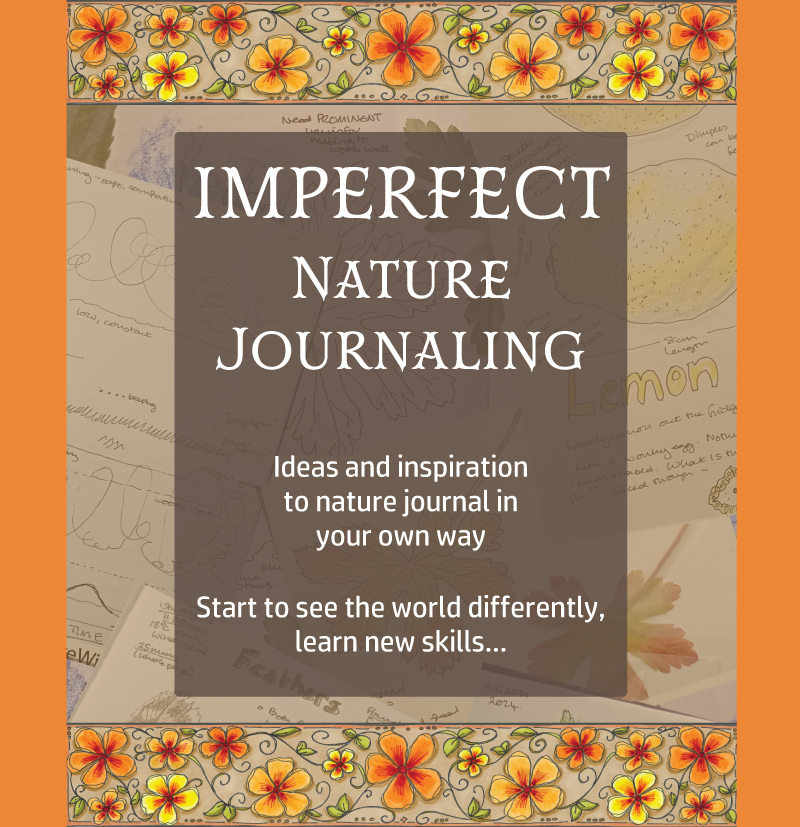 Downloadable PDF nature journaling course - 120+ pages, 20 exercises
Downloadable PDF nature journaling course - 120+ pages, 20 exercisesIf you'd like to explore nature journaling more, please consider joining me for my 'Imperfect Nature Journaling' online course - I've called it this to remind us to nature journal for the process of connecting with nature to feel good and not to put pressure on ourselves to create pretty pages which can quickly ruin the fun and the benefits...
It's a series of 20 lessons (in downloadable PDF format) which are great exercises that you can do in your own nature journal to help you try out different ideas and techniques.
This will help you get the most out of your nature journaling sessions and understand what style of nature journaling is the best for you personally.
If this sounds like something you might like, you can find out more about the course here...
Explore my current art collections here!
Shall we stay in touch..?
Each month, I share stories from my own nature journal, new art from my studio, and simple seasonal inspiration to help you feel more connected with the turning year...
Recent Articles
-
Nature Journaling Autumn Fungi & Folklore
Oct 28, 25 05:58 AM
Nature journaling autumn fungi - discover how nature journaling helps you slow down, notice more, and reconnect with the season... -
Symbolism and Meaning of Fern/Reed for the Celtic Tree Calendar
Oct 27, 25 07:06 AM
Explore the symbolism, myth and meaning of the fern (reed) as part of the Celtic Tree Calendar... -
Sun & Moon, Stars & Spirals
Oct 20, 25 09:31 AM
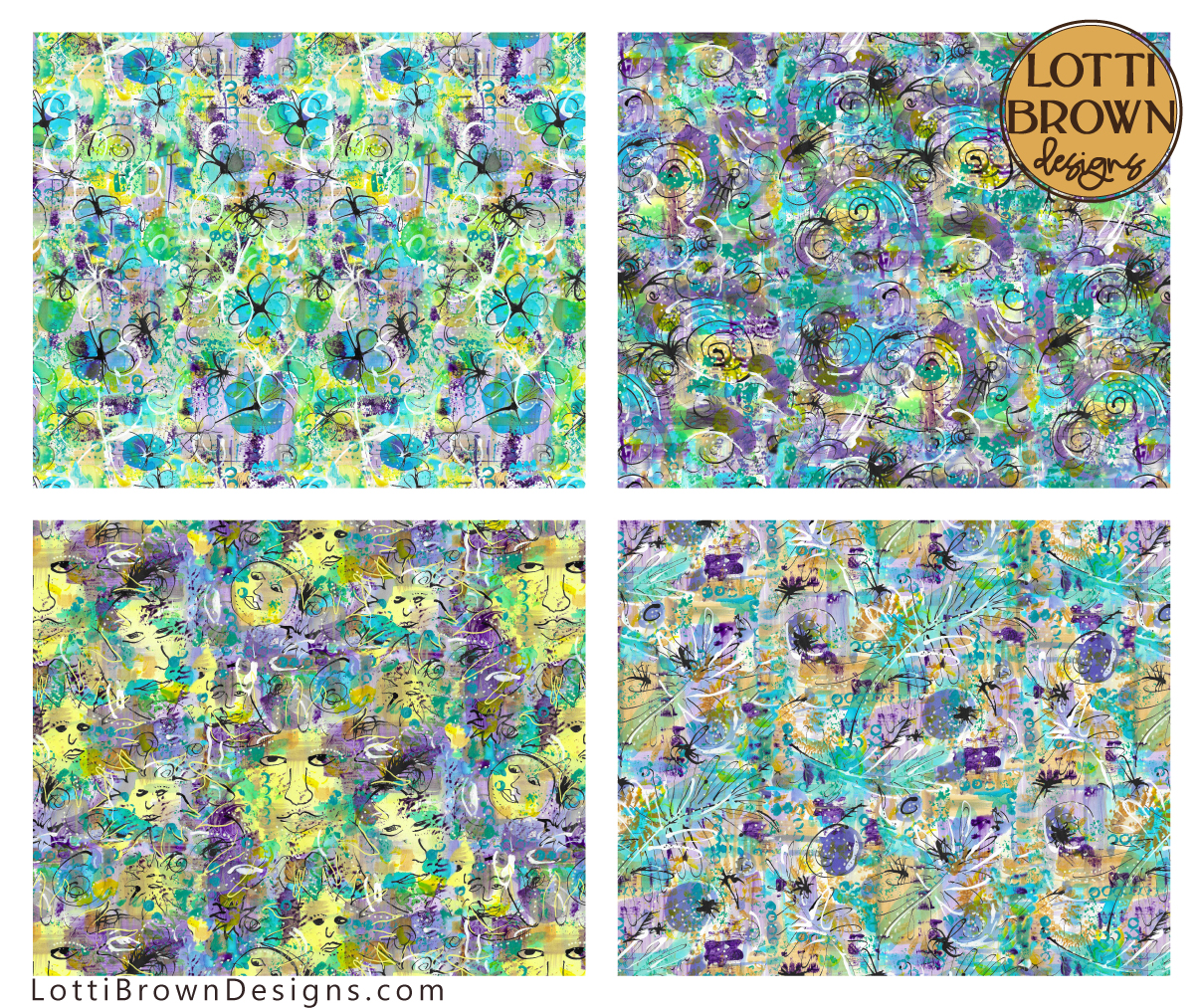 New painted patterns with sun and moons, floral, spiral and star designs...
Explore fabrics and wallpapers in these designs here (Spoonflower)...
Explore homewares and accessories in these designs her…
New painted patterns with sun and moons, floral, spiral and star designs...
Explore fabrics and wallpapers in these designs here (Spoonflower)...
Explore homewares and accessories in these designs her…
Follow me:
Share this page:



